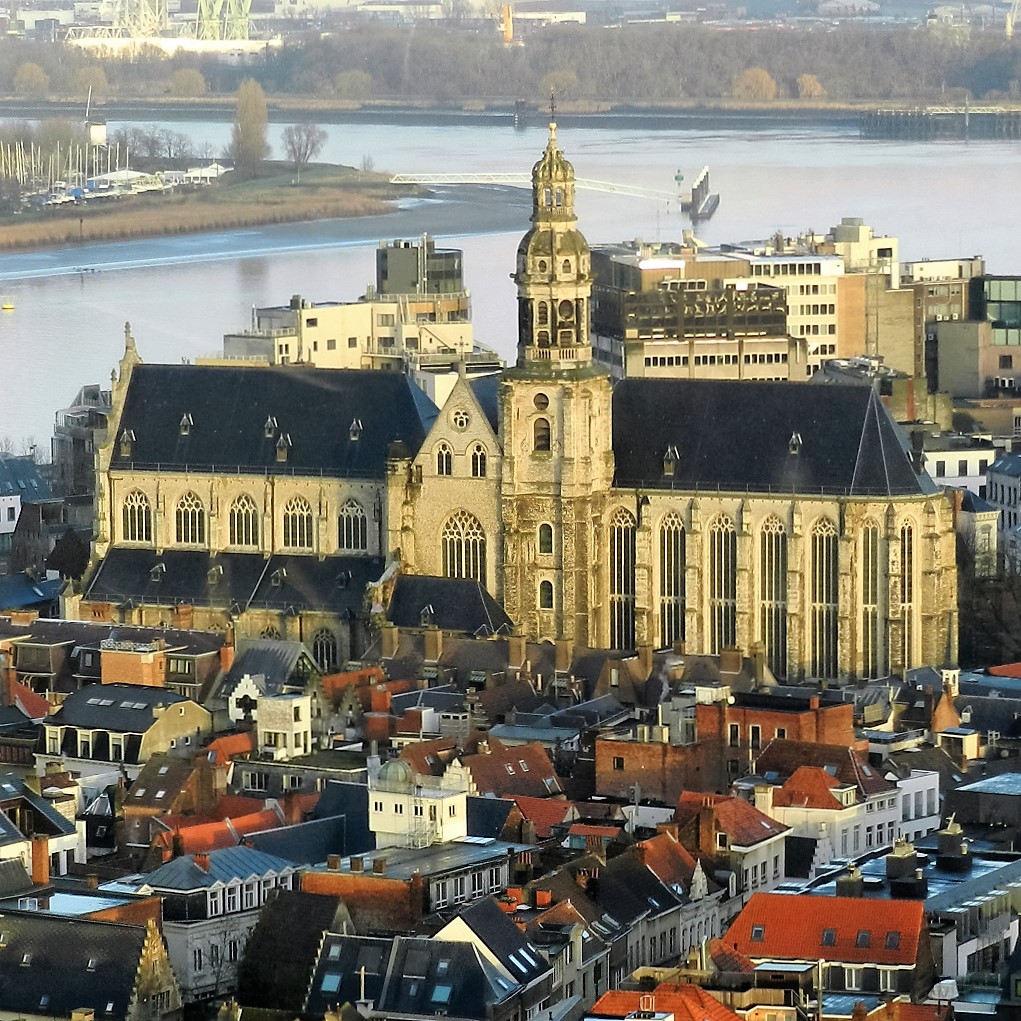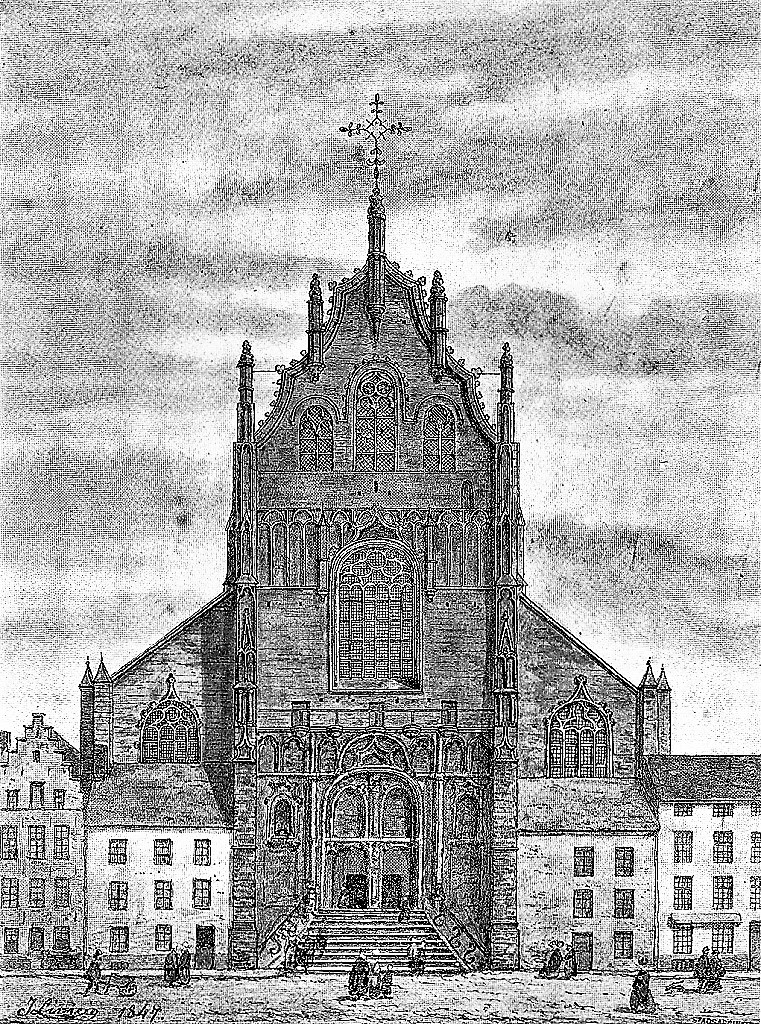Saint Paul’s, the Antwerp Dominican church, a revelation
The tower: a beacon in the seamen’s quarter

Originally there used to be a small Gothic bell tower on the crossingThe central point of a church with a cruciform floor plan. The crossing is the intersection between the longitudinal axis [the choir and the nave] and the transverse axis [the transept]. of the Gothic church (ca. 1630). Lightning destroyed this fleche in 1679. This was a golden opportunity to raise the tower base that had already been built near the crossing to become a real Baroque tower. For a church of the Dominican mendicant order the 65.5 m (= 215 ft) tall tower remains a surprising and exceptionally impressive construction. For some it is a clear sign of competition with the Baroque tower of SaintThis is a title that the Church bestows on a deceased person who has lived a particularly righteous and faithful life. In the Roman Catholic and Orthodox Church, saints may be venerated (not worshipped). Several saints are also martyrs. Charles Borromeo Church, of that other intellectual order, the Jesuits. It is not clear why the commission for the design was given to Nicolaes Millich, who interrupted his post as court sculptor in Stockholm for a few years to stay in his birthplace, Antwerp.

On the quite closed substructure an octagonal superstructure has been put, which starts with a dome eight ribs lead to the balustrade of the small lantern turret. The upward lines of this lantern consist of herm statues with naked male torsos that give the impression of being really functional caryatides. The dome of the upper lantern turret consists mainly of eight volutes that come together at the top. Originally the crowning looked more playful because four dogs with a torch were sitting obediently on the big lantern dome, while one was enthusiastically running around the globe beneath the cross, as an extra wind vane. With this dog Dominic’s attribute was creatively linked to the traditional tower cross! Apparently the triumph of Counter Reformation made the original modesty of the mendicant order turn into pride that would or could not be hidden.
Behind this grandeur however sadness is hidden: when a scaffolding collapsed two novice lay brothers died.
A gruesome story that echoed for a long time is this of Hendrik Nuyers, nicknamed ‘den Blekken’, the leader of Saint Paul’s bell ringers, who already in 1897 had been reprimanded for drunkenness and other lapses. Possibly debts with Mr and Mrs Rolus, the parents of his godchild Henrieke, who lived in Nosestraat, urged him to flee. But first he had killed his four year old godchild by hanging at his house in Potagiepoort.

In 1943 the Nazis requisitioned two chiming bells to keep their war engine going. In 1955 three new bells were consecratedIn the Roman Catholic Church, the moment when, during the Eucharist, the bread and wine are transformed into the body and blood of Jesus, the so-called transubstantiation, by the pronouncement of the sacramental words.. But the mirth of ringing bells lasted but a while. At the 1968 fire the big Pius Bell (1868) weighing 4.5 tonnes crashed down. The four other bells, including Dominicus (1722) were partly melted by the heat, so that the next day their metal trace could be followed when climbing the stairs.
At the restoration (1977-1882) the core of the tower was fortified with reinforced concrete. The 1682 weathercock could be recycled and has proudly taken its place again, high up in the wind. Two new bells, PaulusOriginally, he was called Saul, he was a Jew with Roman citizenship and a persecutor of Christians in the period shortly after the death of Jesus. After his conversion, he became the main gospel spreader in what is now Turkey and Greece. He wrote letters to keep in touch with the Christian communities he had founded, and these texts are the oldest ones in the New Testament. Although he never met Jesus, he is called an “apostle”. and Dominicus were cast by the Louvain workshop Sergeys and were consecrated in the jubiliee 1976. The Pius Bell was restored and three bells (Andreas, Apollonia and Augustinus) came from Saint Augustine Church, which was secularized in 1968. They all ring together their wake up call…



